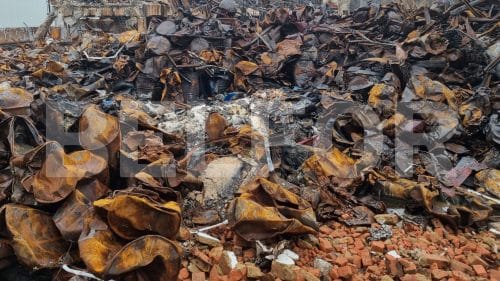Escalating Climate-Related Disasters: Necessity of Comprehensive Preparedness and Recovery

Due to climate anomalies, disasters are increasing worldwide. Among various disasters, typhoons and heavy rainfall unquestionably cause the most significant damage. From 2013 to 2022, the damage caused by typhoons and heavy rainfall amounted to 3.4 trillion won, accounting for 3.7 trillion won of total natural disaster damage during the same period. Most of the damages are attributed to typhoons and heavy rainfall. The nationwide concentrated heavy rainfall in 2020 resulted in damages amounting to 1.372 trillion won in just 14 days, causing immense suffering to many. The recovery costs amounted to 4.2 trillion won, 2.9 times higher than the damage caused by the disaster.
According to the ‘Long-term Research Directions for Adaptation and Mitigation to Climate Crisis’ published by the Korea Environmental Institute in 2023, the intensity of concentrated heavy rainfall in South Korea is expected to increase significantly. In July of last year, the Korea Meteorological Administration officially used the term ‘extreme heavy rainfall,’ indicating that the phenomenon had started in earnest after the weather change. Extreme heavy rainfall refers to the simultaneous observation of accumulated precipitation of 50mm or more in 1 hour and 90mm or more in 3 hours. In other words, it is heavier rainfall than concentrated heavy rainfall. The frequency of concentrated heavy rainfall increased by 20% between 2001 and 2020 compared to the 1980s and 1990s, and incidents of disasters such as flooding, landslides, and floods caused by concentrated heavy rainfall and extreme heavy rainfall also increased. In South Korea, landslides often occur during the rainy season. The landslide in Yecheon, Gyeongsangbuk-do in 2023 was also caused by concentrated heavy rainfall. About one-sixth of the annual precipitation fell over three days during the last year’s rainy season, leading to landslides in an area where landslide concerns were usually non-existent. However, there was no preparation to cope with concentrated heavy rainfall.
Along with concentrated heavy rainfall, the frequency and intensity of typhoons are also expected to increase. Proactive disaster response is no longer an option but a necessary condition. The Ministry of Public Administration and Security has identified inspections and evacuations as measures to prepare for concentrated heavy rainfall. It is essential to inspect things like vinyl houses, circuit breakers, water and gas valves. Equipment such as agricultural machinery and fishing gear should be moved to a safe place. In preparation for landslides, evacuation locations should also be identified in advance. Furthermore, using the government’s safety support app,
along with TV and radio, real-time updates on safety guidelines according to weather conditions can be received. Local governments are also operating smart response systems to establish disaster prevention systems for minimizing disaster damages.
As climate disasters increase in frequency and scale faster than expected, the importance of disaster recovery measures is becoming apparent. The government has already decided to transition from the emergency response system of the Central Disaster and Safety Countermeasures Headquarters to the “Recovery Support Headquarters” in 2022 to systematically manage on-site recovery progress and more. Companies also need to prepare effective recovery response manuals in addition to prevention measures to be ready for disasters.
References
– Korea Fiscal information Service (2023), Fiscal Information Bulletin, Vol.80, 8 ~ 9p

